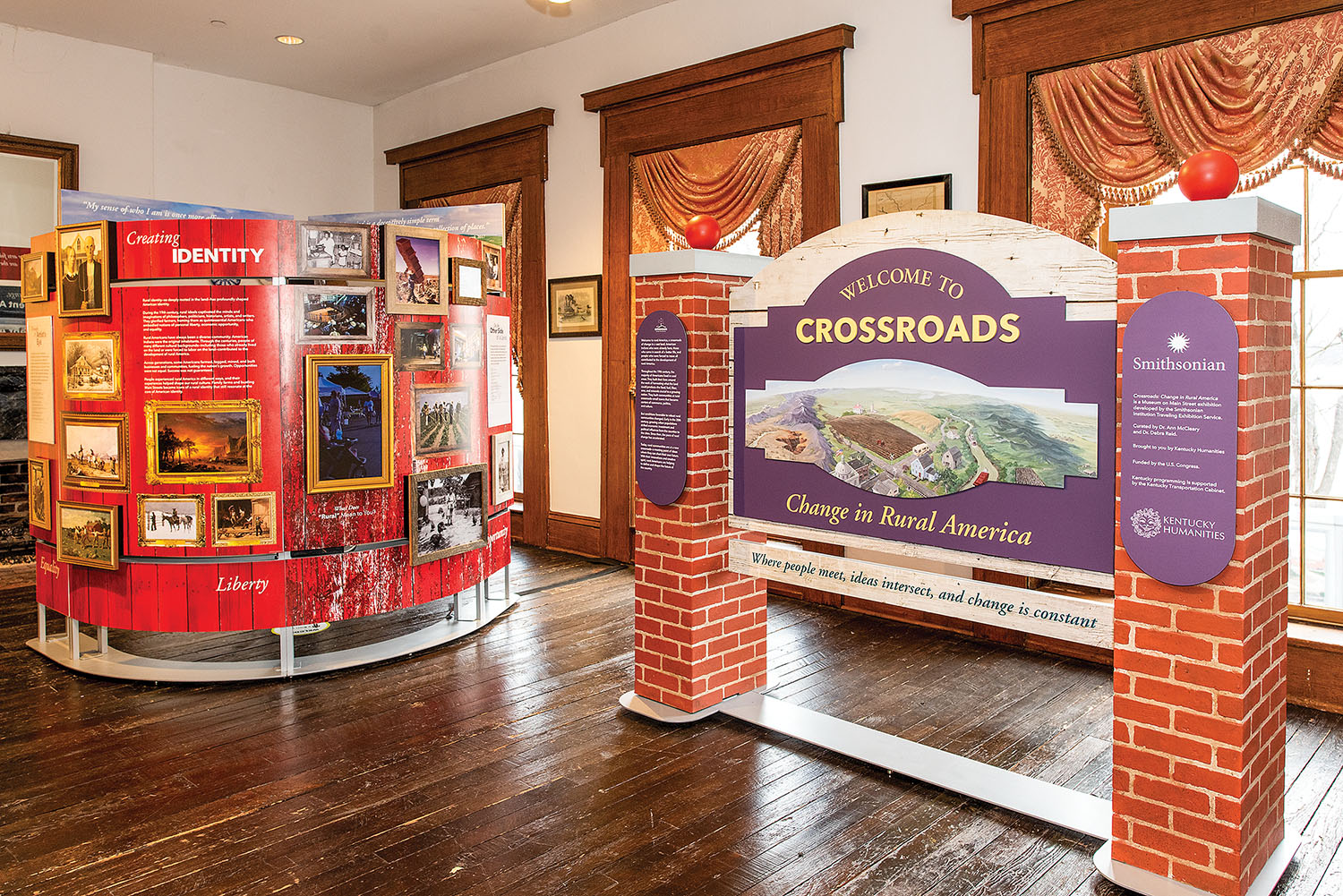A traveling exhibit from the prestigious Smithsonian Institution is spending the next few weeks at the River Discovery Center in Paducah, Ky.
Titled “Crossroads: Change in Rural America,” the exhibit is presented in cooperation with the Smithsonian’s Museum on Main Street and the Kentucky Humanities Council.
“It relates to the museum’s mission because we’re teaching about the importance of our inland waterways, and most of our rivers are bordered on rural communities,” River Discovery Center Executive Director Julie Harris said.
Focusing largely on the second half of the 20th century and beyond, “Crossroads: Change in Rural America” uses story boards, graphic panels, artifacts, interactive components and videos to talk about the evolving landscape of rural life. The information is geared toward both children and adults and is self-paced.
“It touches on all aspects, from the economy to education to land use and diversity, race and social life,” Harris said.
“Crossroads” explores how rural American communities changed in the 20th century. It notes that the vast majority of the United States landscape remains rural, with only 3.5 percent of the landmass considered urban. Since 1900, however, the percentage of Americans living in rural areas dropped from 60 percent to 17 percent. The exhibition looks at that societal change and how rural Americans responded.
“Americans have relied on rural crossroads for generations,” a description of the exhibition said. “These places where people gather to exchange goods, services and culture and to engage in political and community discussions are an important part of our cultural fabric. Despite the massive economic and demographic impacts brought on by these changes, America’s small towns continue to creatively focus on new opportunities for growth and development.”
Admission to the exhibit is free, although there is a charge for visiting the River Discovery Center’s permanent collections if you wish to do so while visiting. In adherence with Kentucky’s required COVID-19 safety measures, the exhibit’s hours are limited to 9:30 a.m. to 5 p.m. Monday through Saturday. The exhibit is on display from January 9 to February 13 at the museum, 117 S. Water St.
Harris noted that the River Discovery Center applied to host the traveling exhibit more than 18 months ago, before the COVID-19 pandemic hit.
“Most cities who have had the exhibit have had field trips (from schoolchildren), and those are pretty nonexistent right now, unfortunately,” she said, adding that could change again after the end of the global pandemic.
However, she added, that presents a marketing opportunity for museum members and other past visitors to the museum to come out and see what’s new while having the opportunity to view a Smithsonian-curated exhibit.
“With much of the river industry being rooted here in Paducah, the exhibit is very relevant as most of the commodities the river moves are from rural areas,” Harris said.
She added that the river industry itself has made changes over time to accommodate the shifting rural landscape through which the river flows.
The River Discovery Center and the surrounding community were expressly chosen to host the exhibit as part of a competitive national/state/local partnership to bring exhibitions and programs to rural cultural organizations. The exhibition is touring seven communities in Kentucky between October 10, 2020, and August 7, 2021. Each year the exhibition travels to a different state.
“‘Crossroads’ allows us to reflect on Paducah history, present and future, and we are excited to explore what the future may hold for our community,” Harris said.
Caption for photo: “Crossroads: Change in Rural America” chronicles the evolving rural landscape of the country. The exhibit is a traveling exhibit curated by the Smithsonian Institution and is currently visiting the River Discovery Center in Paducah, Ky. (Photo courtesy of River Discovery Center)




